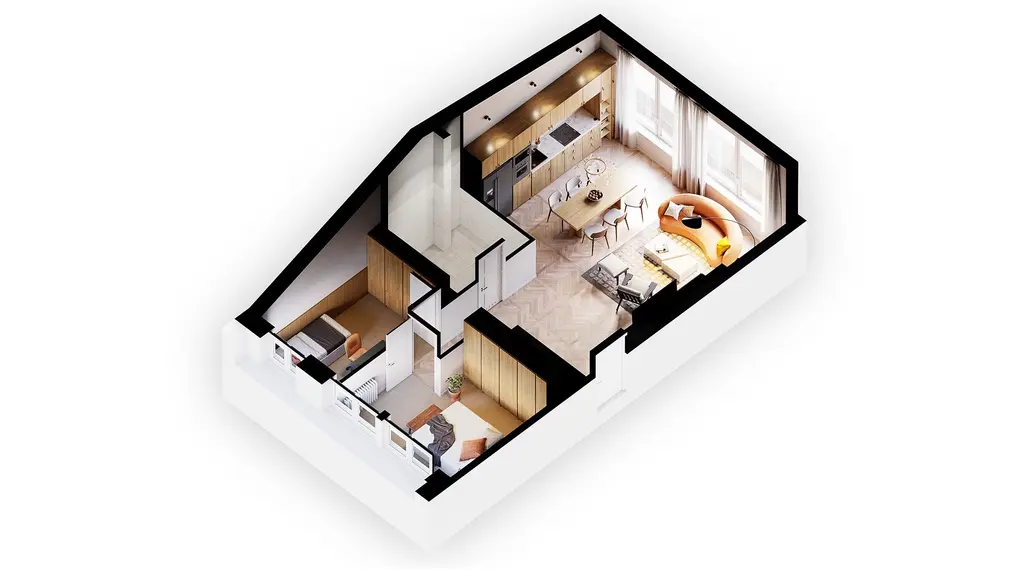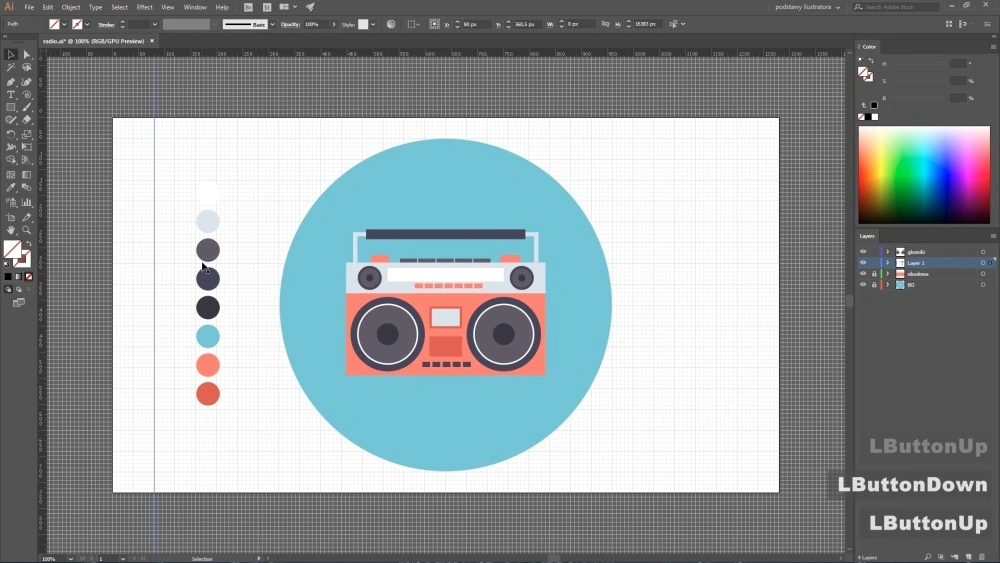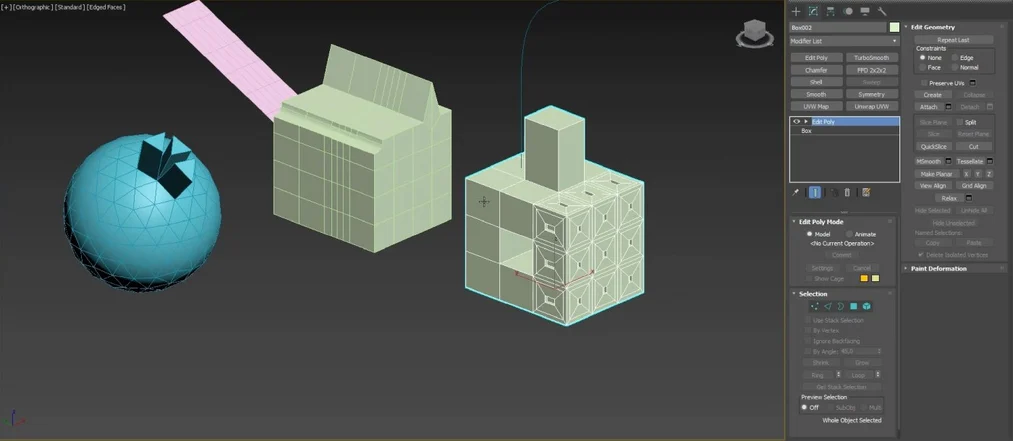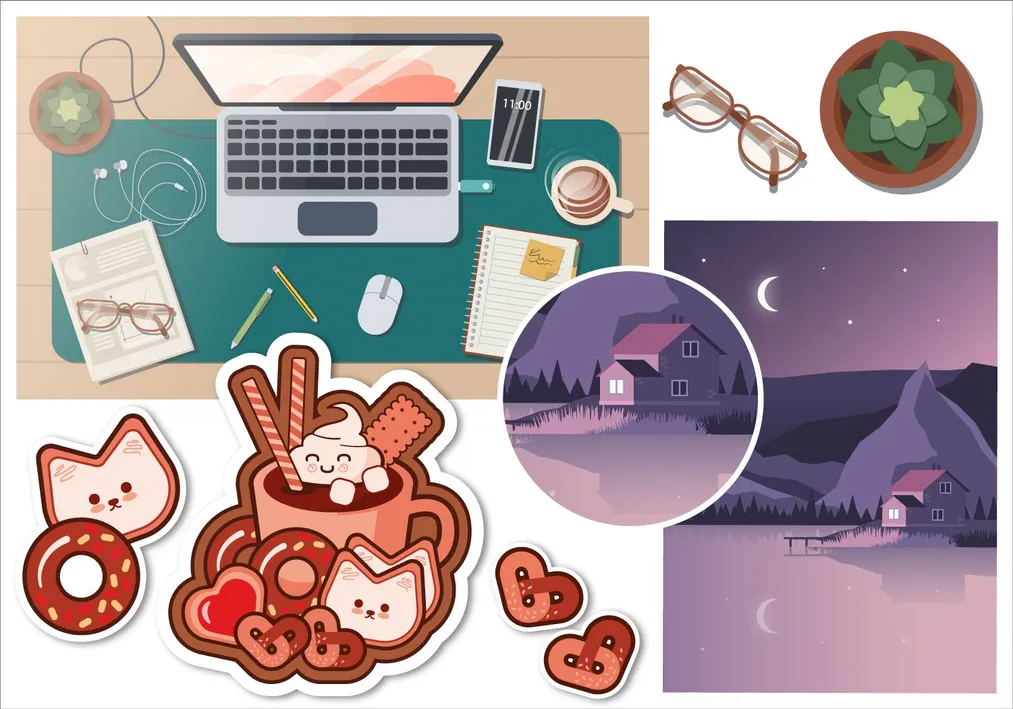Publication date: 03-02-2025 | Update date: 23-05-2025 | Author: Mateusz Ciećwierz
2D and 3D Graphics - What Are the Key Differences?
2D graphics focus on two dimensions: height and width, which makes them flat and emphasizes lines, shapes, colors, and textures. They are mainly used in traditional drawings, illustrations, graphics on websites, and 2D animations. Tools used in 2D graphics, such as Adobe Photoshop or Illustrator, allow for creating vector and raster graphics.
On the other hand, 3D graphics add a third dimension - depth, enabling the creation of spatial and realistic images. 3D graphics are used in 3D modeling, animations, films, video games, as well as product and architectural visualizations. Advanced tools like Autodesk Maya, Blender, or 3ds Max are used for 3D graphics to enable modeling, texturing, animation, and rendering.
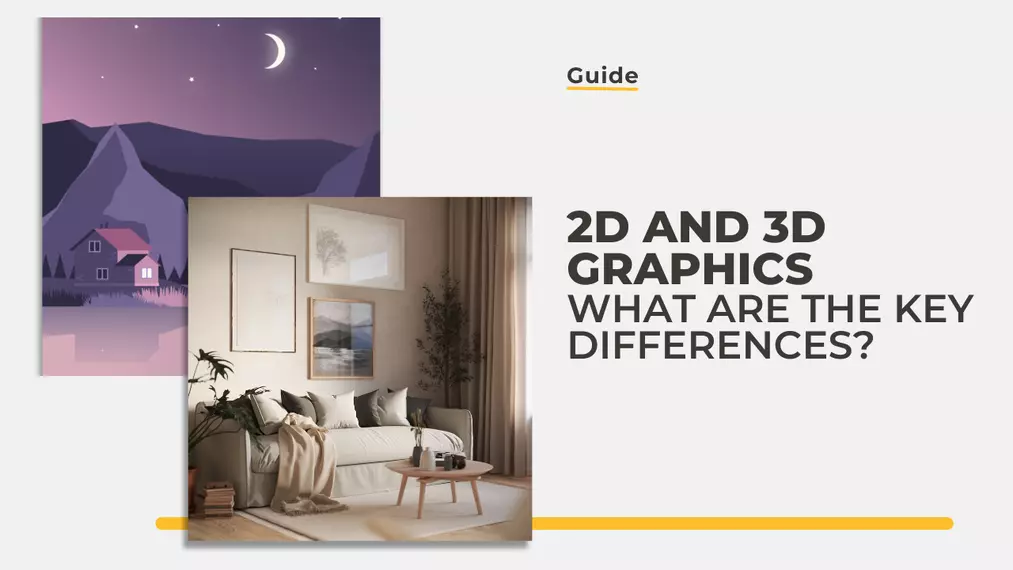
In the world of graphic design and animation, the differences between 2D and 3D graphics are fundamental. Although they share common roots and often coexist in many projects, their unique characteristics and applications make them distinct fields of digital art.
Dimensions in which 2D and 3D graphics operate
- 2D Graphics: Characterized by flat, two-dimensional representation, where height and width play a major role. This form of graphics is well known for traditional drawings, illustrations, and web graphics. 2D animations, such as in classic cartoons, also utilize this technique. ...
Tools and software for 2D and 3D graphics
- Working with 2D graphics, professionals use various tools and software that enable the creation and editing of images in two dimensions. The most popular ones include Adobe Photoshop, primarily used for photo editing and manipulation as well as raster graphics, and Adobe Illustrator, used for creating vector graphics, ideal for designing logos, typography, and other scalable elements. Other popular programs include CorelDRAW, offering a wide range of vector graphics tools, and GIMP, a free alternative to Photoshop. These tools offer features such as layers, brushes, selection tools, filters, and special effects, providing creators with a wide range of possibilities for 2D graphic design and editing. Additionally, there are specialized programs for creating 2D animations, such as Adobe Animate or Toon Boom Harmony, which provide tools for creating smooth animations for films, video games, or web applications.
- Working with 3D graphics, creators use a range of advanced tools and software that enable the modeling, animation, rendering, and texturing of three-dimensional objects. The most popular programs include 3ds Max, widely used in film production and animation due to its powerful modeling, animation, and rendering tools. Another key tool is Blender, free software offering versatile capabilities in 3D modeling, animation, simulation, and rendering. Additionally, programs such as ZBrush are used for digital sculpting, essential in creating detailed character models and objects. These tools offer rich features that allow for the creation of complex and realistic 3D scenes used in films, video games, product visualizations, and other applications requiring three-dimensional graphics.
Application of 2D and 3D graphics
- 2D graphics are an essential element of graphic design, used to create logos, posters, flyers, packaging, and other marketing materials. Additionally, 2D graphics play a crucial role in creating user interfaces for mobile applications and websites, where aesthetics and functionality merge to provide users with friendly experiences. In the field of illustration and digital art, creators use 2D graphics to create unique works, from hand-drawn illustrations to advanced digital compositions. In animation, 2D graphics form the basis for creating classic cartoon animations and modern vector animations. It is also widely used in the publishing industry for producing books, magazines, comics, and educational materials. Furthermore, 2D graphics play a significant role in the gaming industry, especially in the development of mobile games, indie games, and retro games, where simplicity and graphic stylization are often preferred. Lastly, 2D graphics are essential in designing infographics and presentations, transforming complex data and information into understandable and aesthetically appealing visualizations.
- 3D graphics are crucial in the entertainment industry, particularly in the production of animated films, special effects, and the creation of advanced graphics and animations in video games. In architecture and engineering, 3D graphics are used to create realistic visualizations and models of buildings and structures, aiding in project planning and presentation. In product design and industrial engineering, it allows for visualization of projects before physical implementation, which is essential in the design and testing process. In medicine, 3D graphics are used in surgical simulations, education, and visualization of complex biological and anatomical data. In the field of science and research, it is used to create 3D models of complicated phenomena, astronomical objects, and molecular structures. 3D graphics are also used in education to create interactive and engaging teaching materials. In marketing and advertising, it allows for creating realistic and attractive product visualizations and scenography. Additionally, 3D graphics find applications in art and design, offering artists and designers new ways of expression and exploration of three-dimensional space.
Required skills in working with 2D and 3D graphics
- A creator working with 2D graphics must demonstrate a range of skills to effectively create and manipulate images. Understanding design principles such as composition, color, and visual balance is key. Drawing skills are also essential for illustration and animation. Knowledge and proficiency in using graphic tools such as Adobe Photoshop or Illustrator are essential, as well as understanding typography and the ability to effectively combine text with visual elements. The creator must also demonstrate aesthetic sensibility and stay current with design trends to ensure that their work is fresh and appealing. Effective communication skills are important, both in understanding client needs and conveying ideas. Creativity and innovation are crucial for creating unique and memorable projects. Critical thinking ability, problem-solving, and adaptation to different design styles and requirements are also important skills for a 2D graphics creator.
- A creator working with 3D graphics must possess advanced technical and artistic skills. A deep understanding of three-dimensional space, including knowledge of modeling, texturing, lighting, and rendering, is essential. Familiarity with advanced 3D tools and software such as 3ds Max, Blender, or Sketchup is important. Knowledge of dynamics and physical simulations is also useful, especially in creating realistic scenes and effects. Understanding principles of composition and color theory is equally important to 2D graphics, with the added dimension of space. Proficiency in working with textures and materials, including UV mapping, is crucial for achieving desired model appearances. A 3D graphics creator should also demonstrate creativity and the ability to think in three dimensions to effectively transform ideas into realistic and convincing images. Additionally, the ability to work in a team, communication, and problem-solving are important in a professional environment, where 3D projects often require collaboration with other specialists.
Realism and visual perception in 2D and 3D graphics
- In 2D graphics, a significant aspect is its focus on stylization and the ability to be more abstract. This form of graphics allows for a wide spectrum of artistic expression, from traditional realistic illustrations to expressionist and minimalist designs. 2D art offers unique freedom in communicating ideas, enabling creators to convey complex concepts in a simple, direct manner. This is particularly evident in projects where conveying emotions or messages is crucial, such as in comics, advertisements, or infographics. 2D art allows for creating strong visual metaphors and symbols that can directly impact the viewer.
- Conversely, 3D graphics are known for their ability to provide significantly greater realism. They utilize advanced techniques to replicate light, shadow, textures, and motion, allowing for the creation of images and animations that are difficult to distinguish from reality. This feature is highly important in industries where realistic visualizations are essential, such as simulations in education, training, medicine, or engineering. 3D graphics allow for creating visualizations of products that do not yet exist, realistic architectural models, as well as advanced special effects in films and video games. Additionally, in virtual and augmented reality, 3D graphics play a crucial role in creating immersive and convincing environments that provide deeply interactive experiences.
Summary
While 2D and 3D graphics have their unique characteristics and applications, both forms are essential elements of contemporary design and animation. The choice between them depends on the project's objectives, required level of realism, and the creator's personal preferences. Understanding the differences between them allows for effectively leveraging each of these forms to best meet project needs. With the advancement of technology and tools, the boundaries between 2D and 3D graphics are becoming increasingly fluid, opening new possibilities for artists and designers to explore and integrate these two visual dimensions.
Read on our blog
-
![How to use Nano Banana Pro and how much does it cost? A practical guide for beginners]()
How to use Nano Banana Pro and how much does it cost? A practical guide for beginners
Learn how to use Nano Banana Pro for free via Gemini, when it’s worth paying, and which solution will be best for you! -
![Artificial intelligence - AI - for furniture manufacturers - see what possibilities it offers!]()
Artificial intelligence - AI - for furniture manufacturers - see what possibilities it offers!
Discover the AI tools and workflows that enable creating packshots, material variants, and interior arrangements: in practice, step by step. -
![Alternative to AutoCAD - Discover GstarCAD with a Perpetual License]()
Alternative to AutoCAD - Discover GstarCAD with a Perpetual License
Looking for a cheaper alternative to AutoCAD? GstarCAD is a professional CAD tool that costs up to 5 times less. See what it offers! -
![What are the most common mistakes made in Archicad by beginners?]()
What are the most common mistakes made in Archicad by beginners?
Are you starting with Archicad? Find out which mistakes beginners most often make and how to avoid them to work more efficiently!
